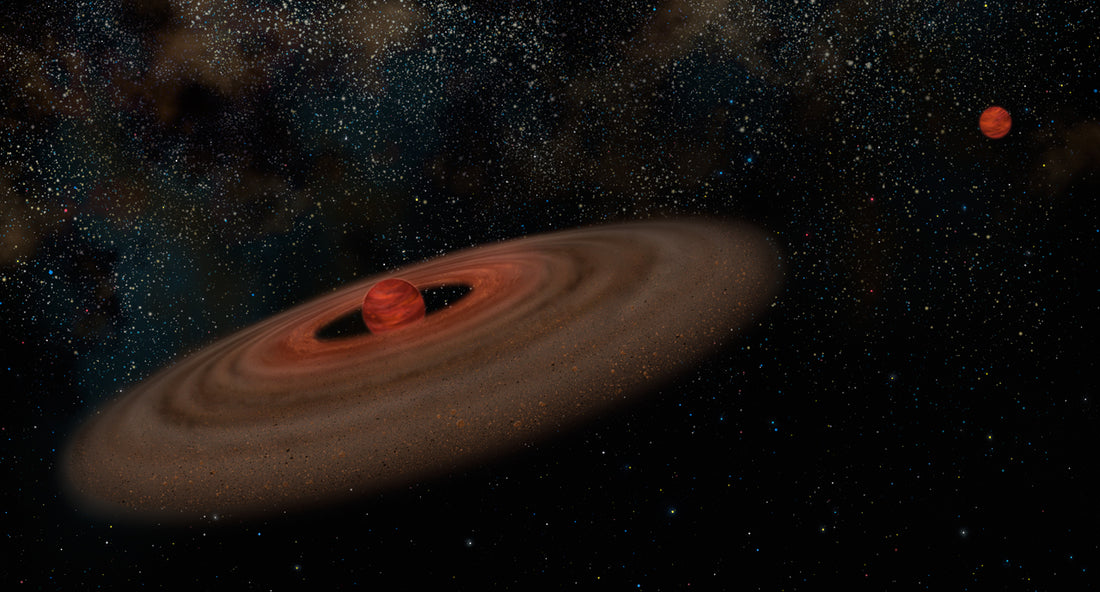
NASA Clocks Turbulent Wind Speed On A Gassy Brown Dwarf
Share
In a historical first, NASA has measured the wind speed in the thick and gassy atmosphere of a brown dwarf 6.5 lightyears from Earth in the constellation of Vela.
Not sure what a brown dwarf is?
They're strange planetary objects too big to be a planet and too small to be considered a star, suffering from a type of middle-child syndrome. They're also often referred to as "failed stars". Yeesh...
Like many larger planets, brown dwarfs have a stinking gaseous atmosphere with legendarily furious winds.

You know the bands on Jupiter?
That's from such winds turbulently forcing gas around the giant.
Now, this isn't the first time we've seent his gaseous bands on a brown dwarf, but its the first time astronomers have detected it using a technique called 'polarimetry'. Polarimetry is the art of measuring the way light acts on objects and becomes warped and twisted, or 'polarised'.
While it's not a new method, there are fresh technological advances in the analysis process that are breathing new life into polarimetry. With this new tech, data collection has never been more precise and sensitive which will allow further historical breakthroughs in black holes, star life cycles, exoplanets, and even brown dwarfs.
Brown dwarfs are born the same way as stars, in a dramatic collapse of cosmic material in gas clouds, yet not large enough to have a hydrogen fusion core which makes stars what they are.
Hence the term, "failed stars".
In any case, brown dwarfs are pretty odd and worth studying, especially their windy bits.
As polarimetry advances as the sole way of researching these cloudy worlds, it is the best chance we have of detecting bands that circumnavigate them.
While we can't observe actual clouds through polarimetry yet (which would be groundbreaking and very cool), astronomer Maxwell Millar-Blanchaer and colleagues of Caltech used the European Southern Observatory's Very Large Telescope (VLT) in Chile to attempt wind tracking via polarimetry.
Yeah, it's actually called the Very Large Telescope and the team found violent weather patterns and banding across the brown dwarf almost identical to those on Jupiter.
The dwarf in question is named 2MASS J10475385+2124234 and approximately the same size as Jupiter. Pretty catchy name, right?
The team collected the dwarf's magnetic field and atmospheric data via polarimetry and compared their wavelengths to calculate its windspeeds.

The speeds were clocked at a staggering 620km/h on average.
We'll just say its more than enough to blow the candles out on your birthday cake.
Its believed the storms can rain things like silicates or ammonia. Which would suck to be a part of.
The future use of polarimetry can help us study the atmospheres of exoplanets for more than weather, but to assess the suitability for life. And not just alien life, but a habitable option for mankind after we pollute this world into a rotten, barren wasteland.
If you've read this far, you're exactly the type we're looking for to join our Australian Space Society.
Enter ASS here...





